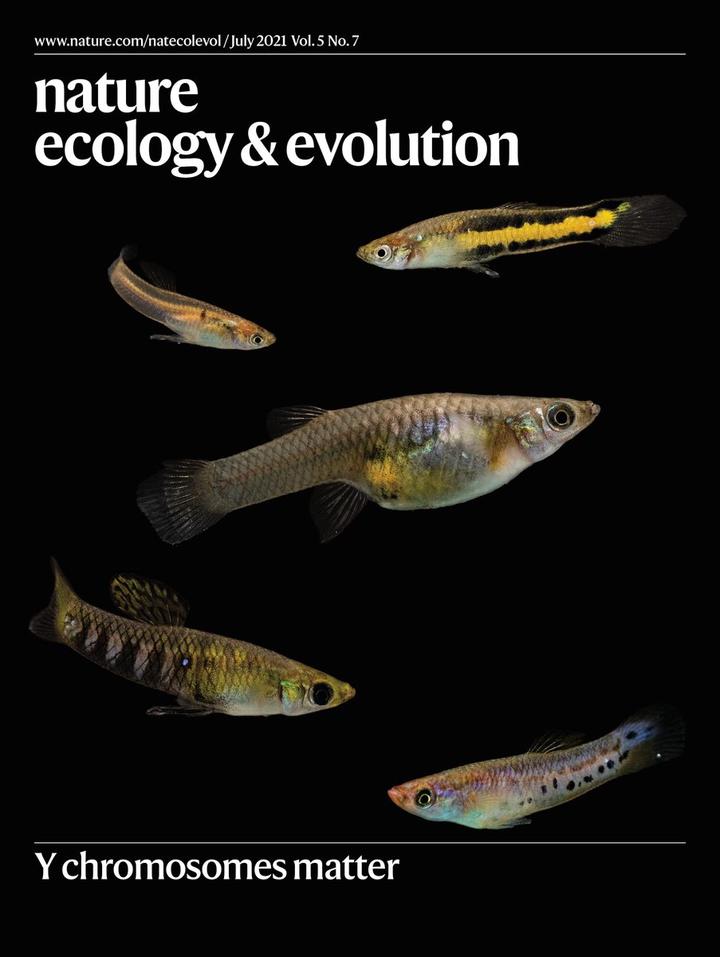Extreme Y chromosome polymorphism corresponds to five male reproductive morphs of a freshwater fish
 Cover
Cover
Abstract
Loss of recombination between sex chromosomes often depletes Y chromosomes of functional content and genetic variation, which might limit their potential to generate adaptive diversity. Males of the freshwater fish Poecilia parae occur as one of five discrete morphs, all of which shoal together in natural populations where morph frequency has been stable for over 50 years. Each morph uses a different complex reproductive strategy and morphs differ dramatically in colour, body size and mating behaviour. Morph phenotype is passed perfectly from father to son, indicating there are five Y haplotypes segregating in the species, which encode the complex male morph characteristics. Here, we examine Y diversity in natural populations of P. parae. Using linked-read sequencing on multiple P. parae females and males of all five morphs, we find that the genetic architecture of the male morphs evolved on the Y chromosome after recombination suppression had occurred with the X. Comparing Y chromosomes between each of the morphs, we show that, although the Ys of the three minor morphs that differ in colour are highly similar, there are substantial amounts of unique genetic material and divergence between the Ys of the three major morphs that differ in reproductive strategy, body size and mating behaviour. Altogether, our results suggest that the Y chromosome is able to overcome the constraints of recombination loss to generate extreme diversity, resulting in five discrete Y chromosomes that control complex reproductive strategies.